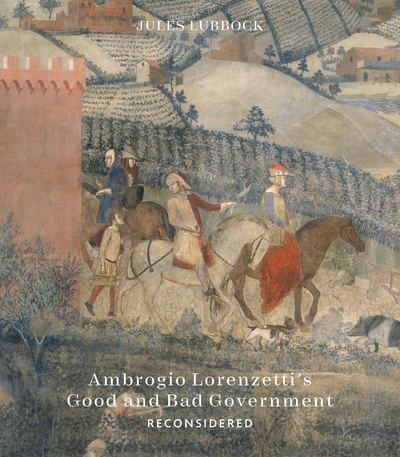Nous utilisons des cookies pour améliorer votre expérience. Pour nous conformer à la nouvelle directive sur la vie privée, nous devons demander votre consentement à l’utilisation de ces cookies. En savoir plus.
Ambrogio Lorenzetti’s Good and Bad Government reconsidered
Holberton - EAN : 9781915401137
Édition papier
EAN : 9781915401137
Paru le : 15 janv. 2025
50,00 €
47,39 €
Bientôt disponible
Pour connaître votre prix et commander, identifiez-vous
A paraître 15 janv. 2025
Notre engagement qualité
-
 Livraison gratuite
Livraison gratuite
en France sans minimum
de commande -
 Manquants maintenus
Manquants maintenus
en commande
automatiquement -
 Un interlocuteur
Un interlocuteur
unique pour toutes
vos commandes -
 Toutes les licences
Toutes les licences
numériques du marché
au tarif éditeur -
 Assistance téléphonique
Assistance téléphonique
personalisée sur le
numérique -
 Service client
Service client
Du Lundi au vendredi
de 9h à 18h
- EAN13 : 9781915401137
- Editeur : Holberton
- Date Parution : 15 janv. 2025
- Disponibilite : Pas encore paru
- Barème de remise : NS
- Nombre de pages : 184
- Format : H:1 mm L:245 mm E:280 mm
- Poids : 0gr
- Résumé : This book sheds new light on one of the most important artworks of the early Italian Renaissance, Ambrogio Lorenzetti’s fresco cycle of Good and Bad Government in the Palazzo Pubblico in Siena. By connecting the images with the Hymn to Justice inscribed on the walls and highlighting Ambrogio’s ingenuity and personal approach to the subject the volume presents a fresh reading of its rich artistic message. In 1338 Ambrogio Lorenzetti painted three huge frescoes, known today as Good and Bad Government, on the walls of the Sala dei Nove, the Room of the Nine, in the Palazzo Pubblico in Siena, where the city’s nine executive magistrates presided over the destiny of this famous commune. The frescoes were meant to be strong visual reminders of the Nove’s duties and an admonishment of the nefarious effects of bad government. Boasting the largest artist’s signature of all time, the frescoes are testament to the extremely high esteem in which Ambrogio’s art was held by his fellow citizens. Nowadays Good and Bad Government has become one of the most widely reproduced works of the early Renaissance and is recognized for its many innovations, including the first European panorama of a cityscape and countryside. But what sort of visual journey was Ambrogio asking the Nove to make through this expanse? In pursuit of an elusive answer, the murals have become one of art’s great puzzles, challenging scholars and public alike. Scant attention, however, has been paid to the images themselves. They have been studied merely as symbols and allegories of abstract political concepts in which good and bad government are starkly juxtaposed. Despite his enormous signature, Ambrogio has been treated more as a servile illustrator than a creative artist, disregarding his highly personal approach to painting and the way his visual ingenuity, from composition to brushwork, shaped a far more complex and fascinating message. This book attempts finally to illuminate Ambrogio’s pictorial strategy by reading it in light of the Hymn to Justice inscribed upon the walls. The frescoes enrich the poet’s message, subtly changing and even subverting it. Instead of a pictorial lecture straightforwardly contrasting a utopia with a dystopia, Ambrogio blurs the binaries and invites the viewer to look beneath the idyllic surface of Sienese civic life.

